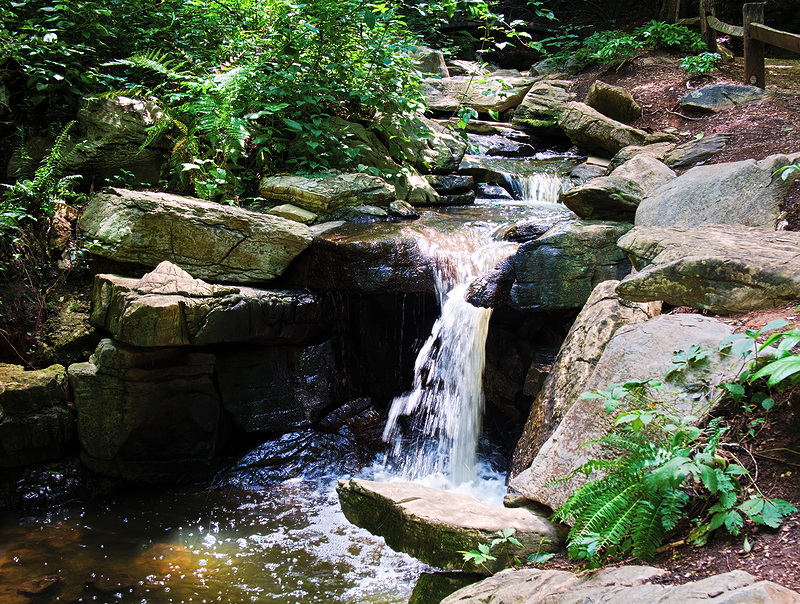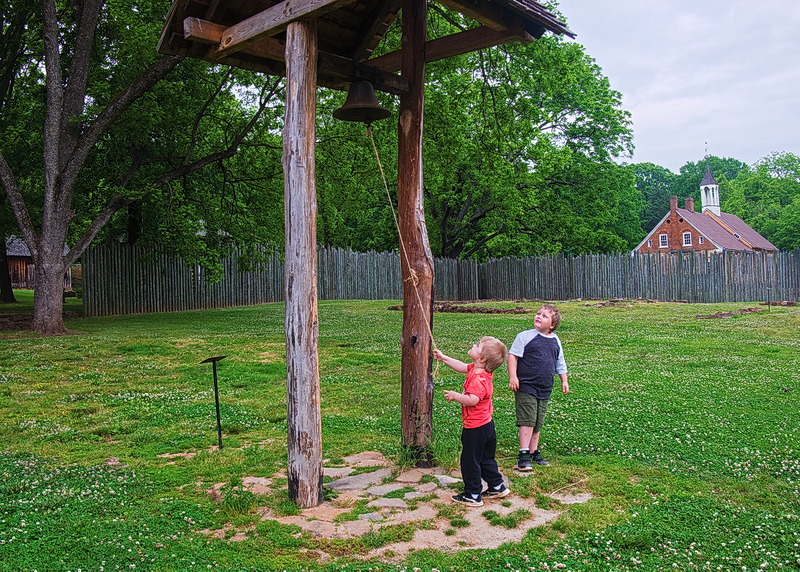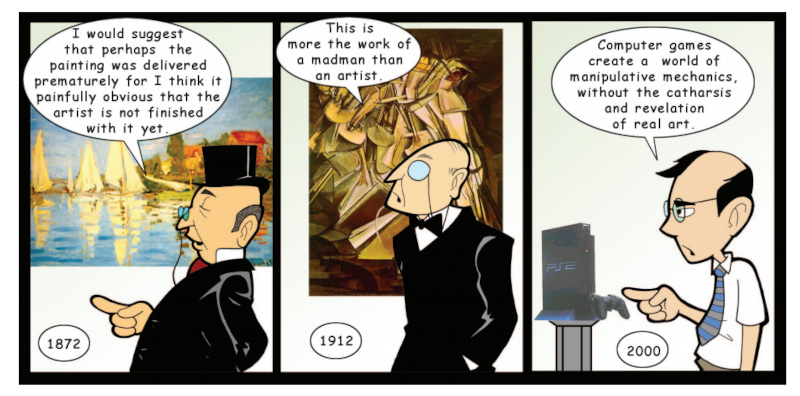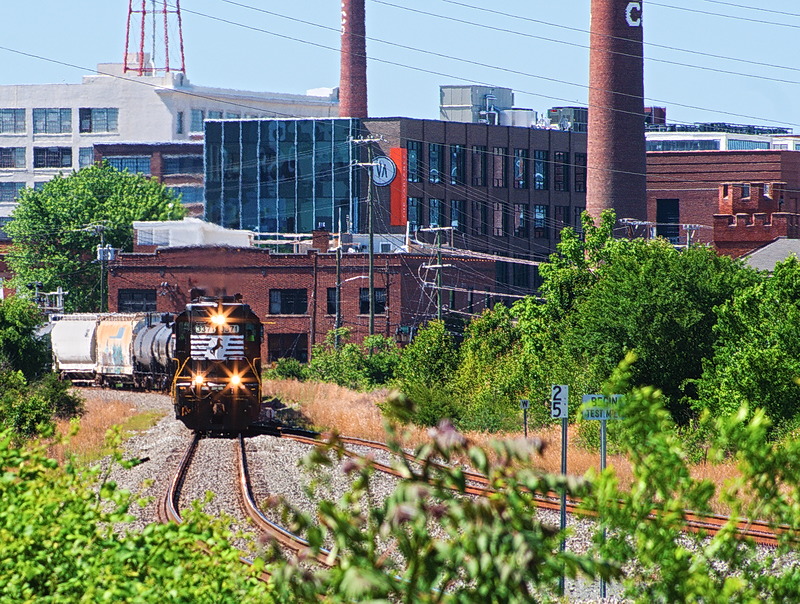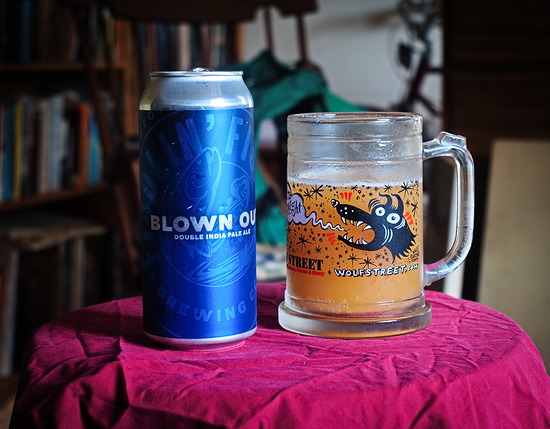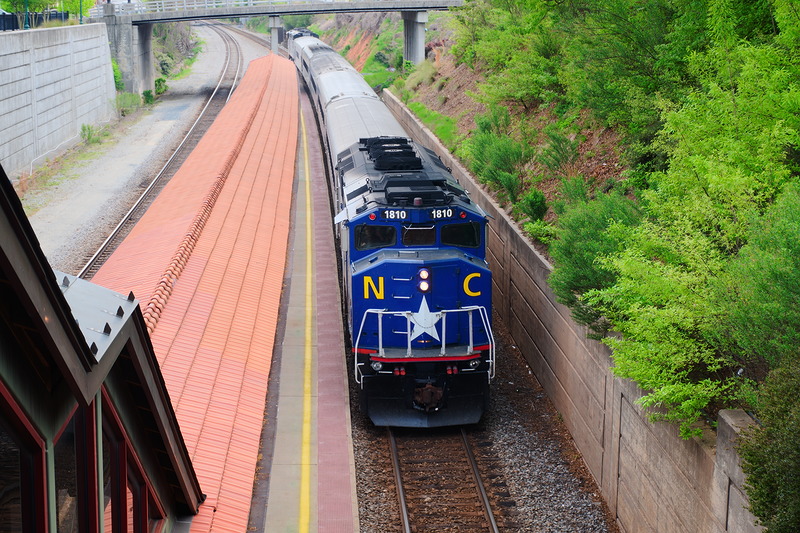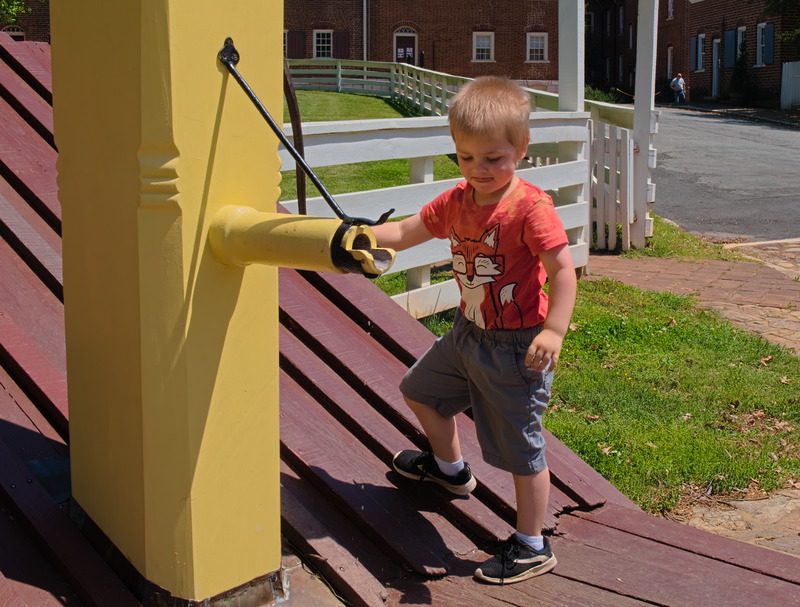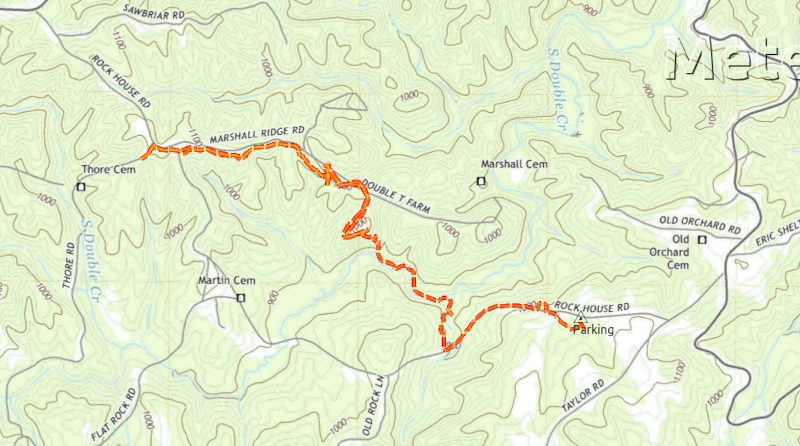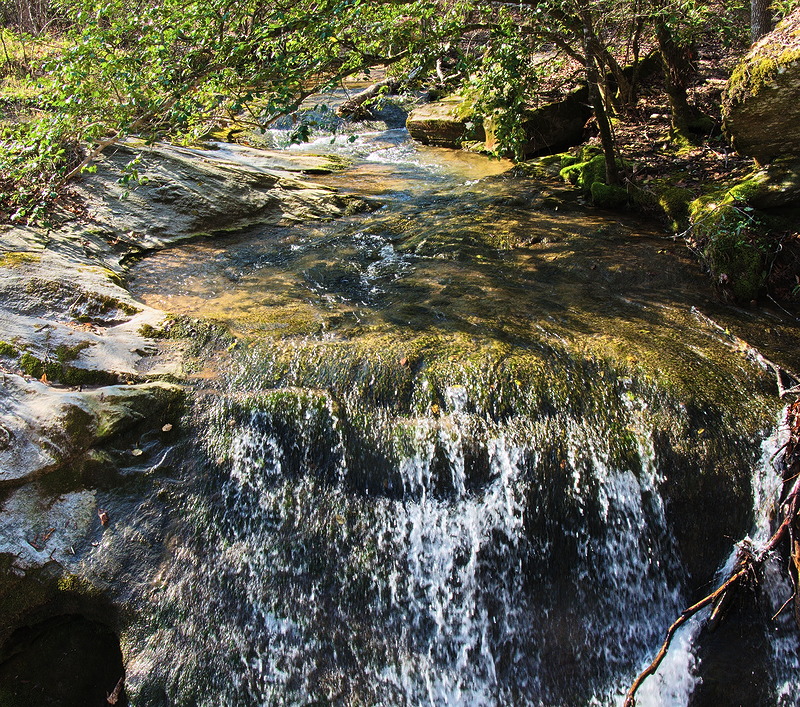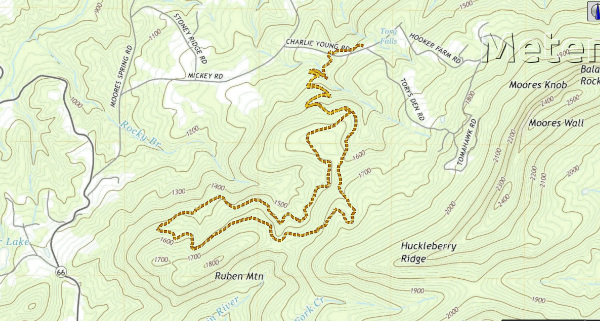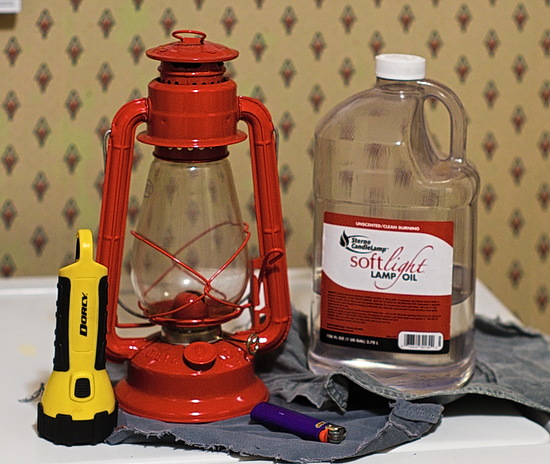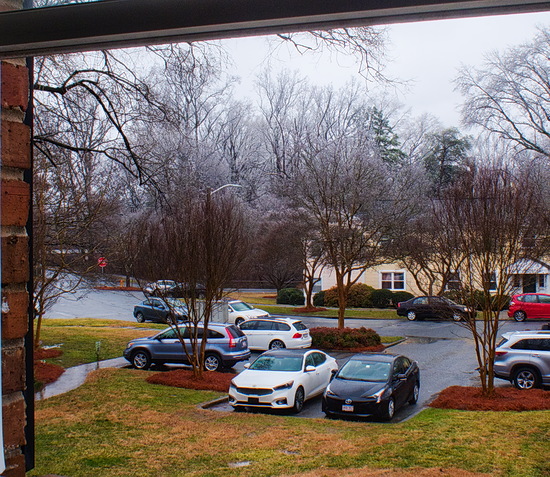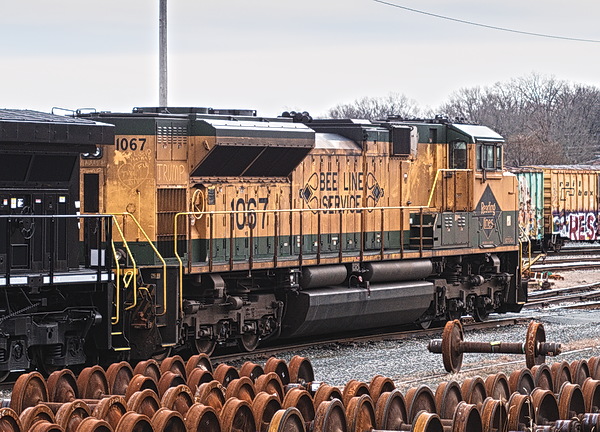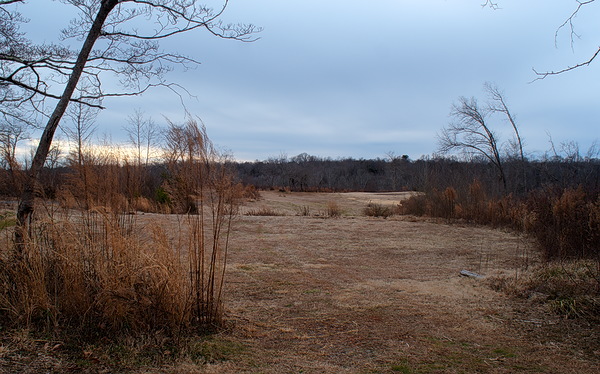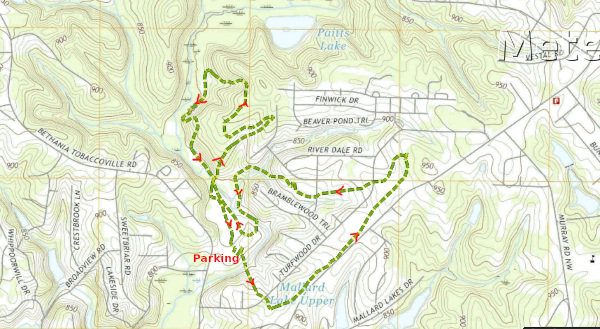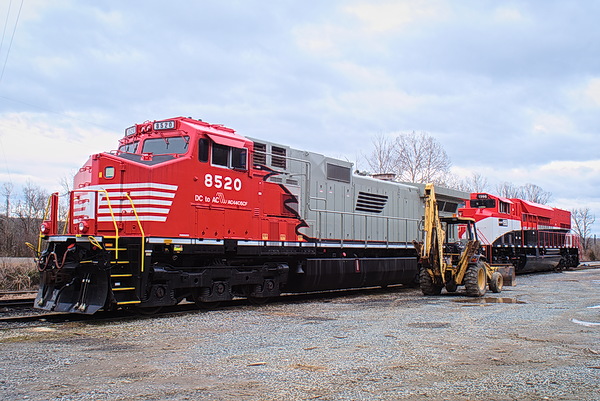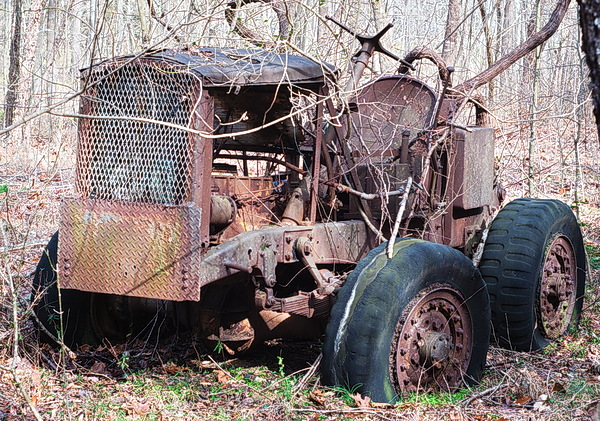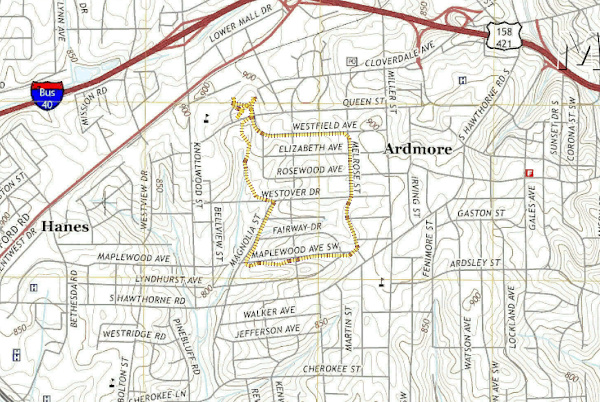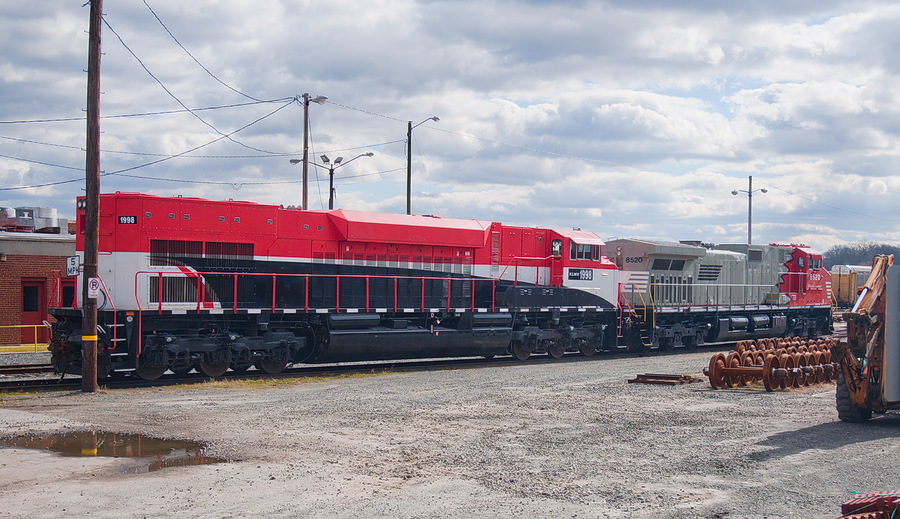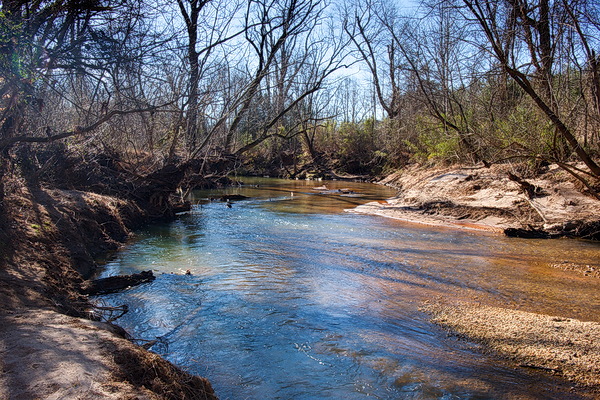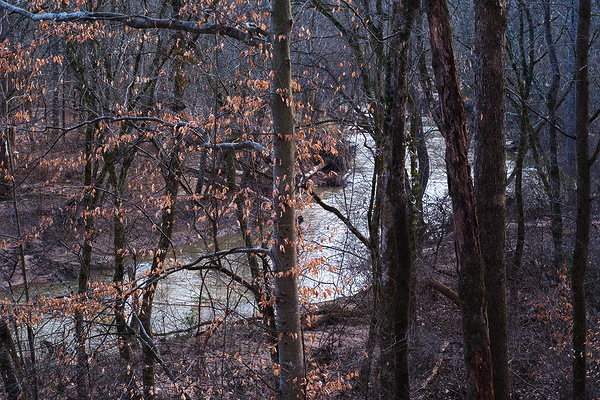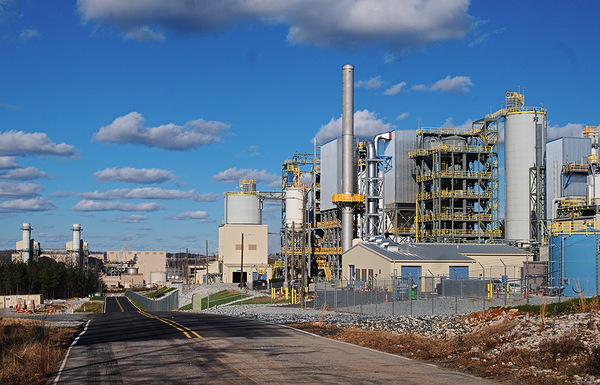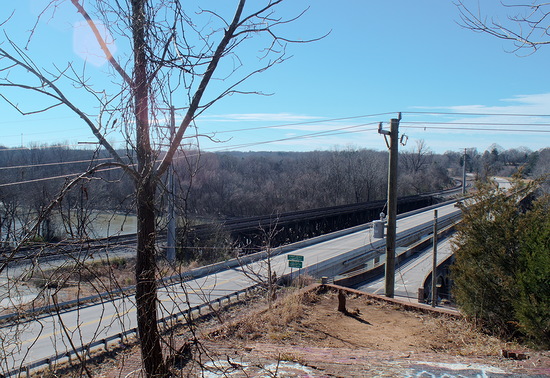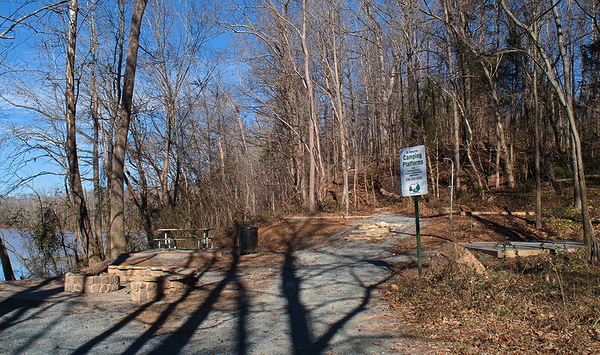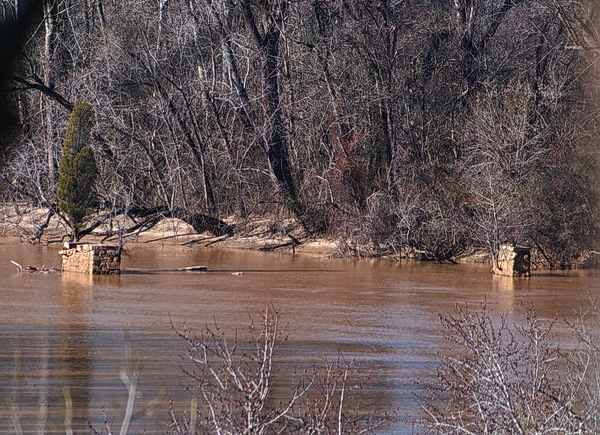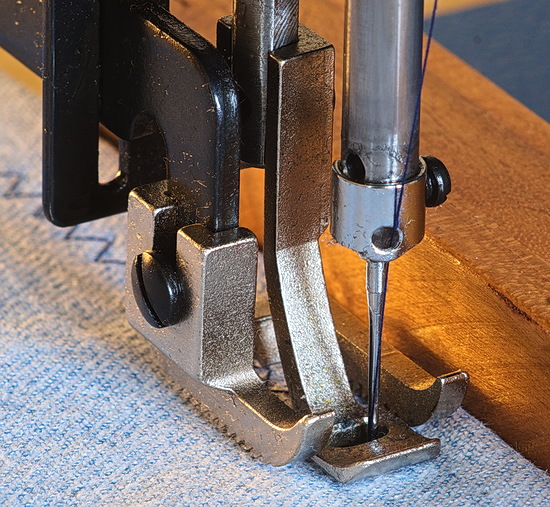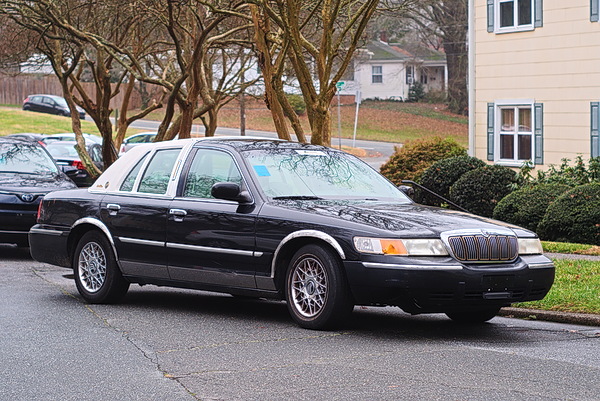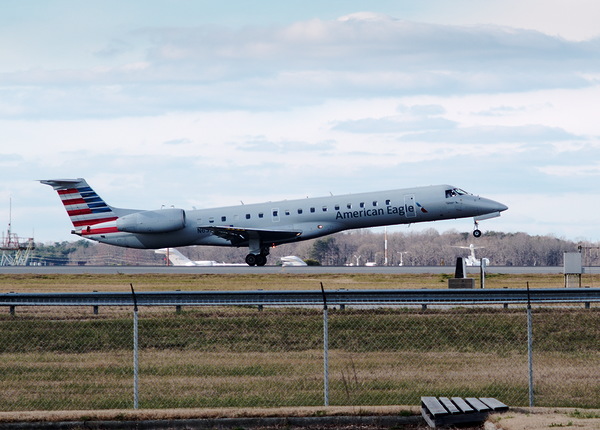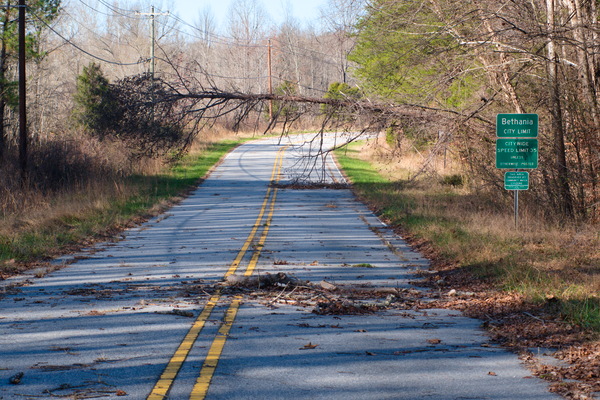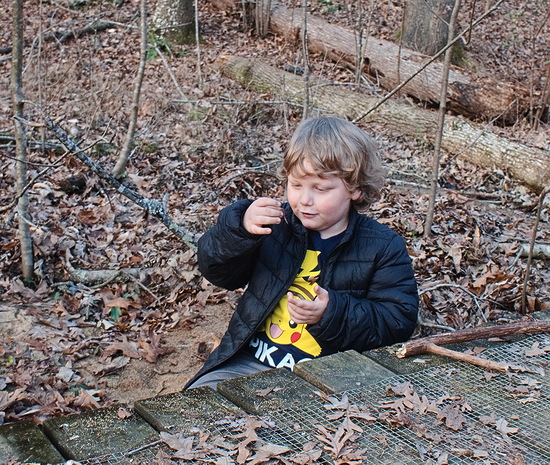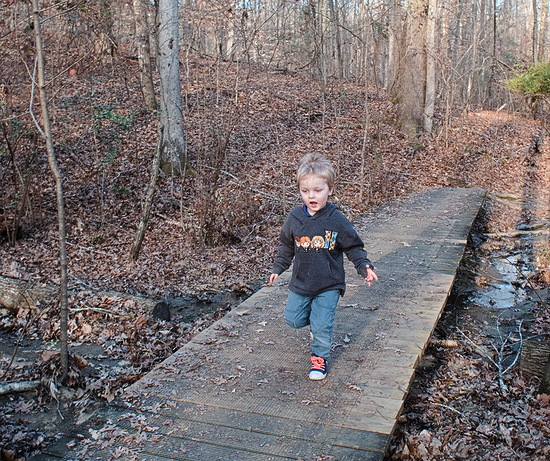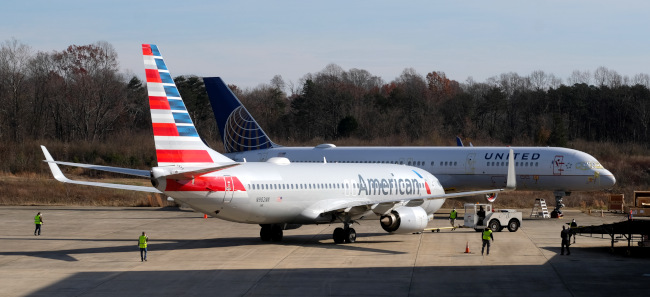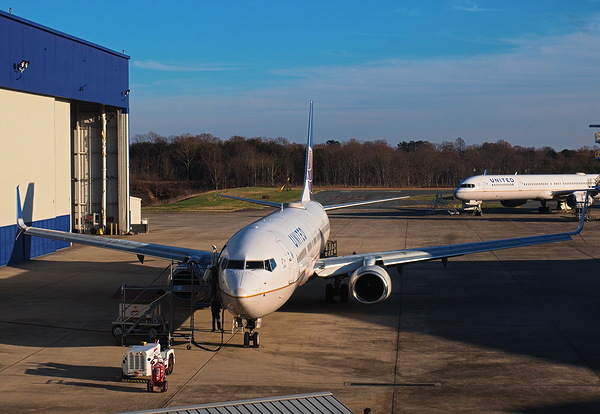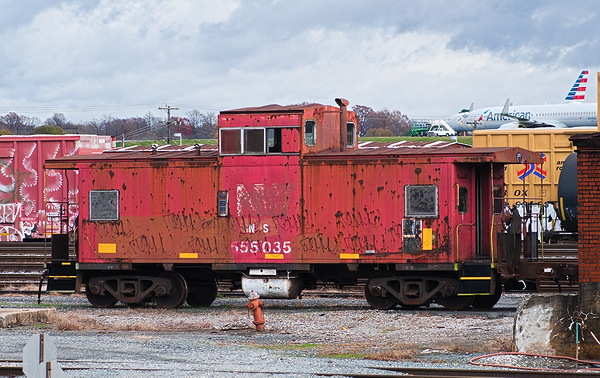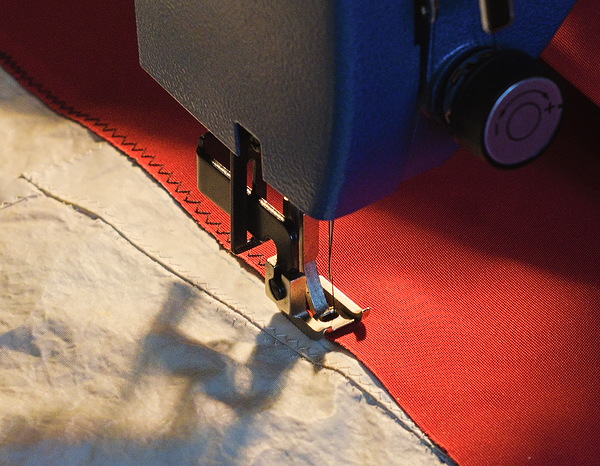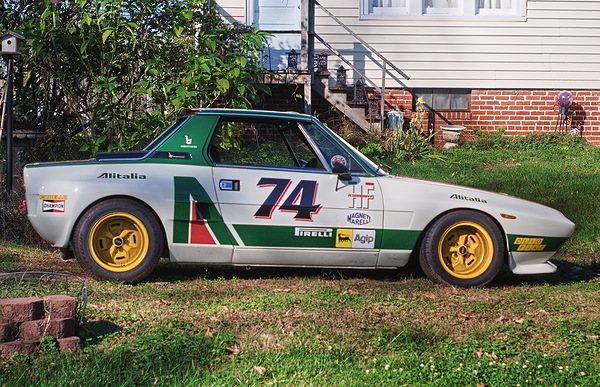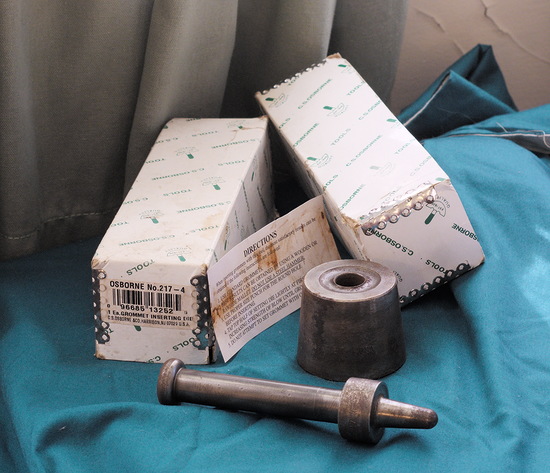Paul's Miscellany
All photographs by Paul M. Clayton unless otherwise noted. Click on a picture to see it larger.
This page includes posts from 10/27/20 through 9/14/21.
Newer posts -
Older posts -
- 5/13/20 through 10/26/20
- 10/1/19 through 5/12/20
- 2/28/19 through 9/30/19
- 9/1/18 through 2/27/19
- 3/1/18 through 8/31/18
CPC Phase II 28/2.8
Posted 09/13/21My mother is downsizing from her big house in Florida to a smaller place. In the process, she turned up a box of film cameras and equipment which she gave to me. The items of immediate interest were two lenses in Nikon F mount that she used on her last film camera, a Nikon EM. The Series E 50mm f/1.8 I will cover later, for now let's look at the CPC Phase 2 MC Macro 28 f/2.8.
Pentax Forums has a page of user reviews of the CPC Phase 2 MC Auto 28mm F/2.8 which looks to be close to identical to our lens, except lacking the macro focusing ability. It is noted that the CPC lens was "made by COSMICAR (a Pentax sub.)".
Also at Pentax Forums is the thread What is Cosmicar? There is general agreement that Cosmicars are a Pentax brand and are similar if not identical to the Takumar-A and Pentax-A early K-mount lenses. One post seems to imply that Cosmicar was Pentax's chosen name for their new bayonet mount lenses that superseded the 42mm screw mount in the mid-1970s, but they thought better of it and reverted to Takumar for a while. Eventually all Pentax camera lenses were labeled "Pentax" with an ever-expanding plethora of alpha suffixes. Evidently the Cosmicar brand is still used for CCTV and industrial lenses.
My lens appears almost identical to the Takumar-A 28mm 2.8. However, the Pentax Forum review states that the Takumar-A has seven elements in seven groups, while the CPC Phase 2 packaging states that the lens has six elements in six groups.
It is possible that CPC sourced my lens from someone other than Cosmicar, although the Pentax family resemblence is striking. The Pentax Forum Takumar-A review states "This lens was also marketed as COSMICAR-A 28mm 1:2.8, MC AUTO CPC Phase 2 28mm 1:2.8, and MC AUTO CPC Phase 2 28mm MACRO 1:2.8, the latter presumably with a closer smallest focusing distance than the 30 cm of the other versions. Technical data are unfortunately not readily available for these variants." So the history of these lenses is unclear.
If in fact the lens is a Pentax, the factory went to some lengths to adapt it for Nikon. In addition to creating an F mount with requisite rabbit ears, the filter thread was enlarged from the standard Pentax 49mm to Nikon standard 52mm.
Regardless of who made the lens, my sample shows exceptional sharpness at close focus, along with a tendency to flare if the sun is anywhere in front of the camera. It is well-built, solid and light. A lens hood might help with the flare, and if long focus turns out as well as close, it could spend some time on the camera.
Tractor Supply
Posted 09/09/21What is Tractor Supply? The author of Dividend Growth Investor describes TS like this: "Tractor Supply Company (TSCO) operates rural lifestyle retail stores in the United States. The company sells its products to recreational farmers, ranchers, and others..."
I don't think he is being ironic.
Unfiltered
Posted 09/04/21Did Sierra Nevada kick off the unfiltered vogue with their Hazy Little Thing, released in January 2018? It's a great beer, the one I choose the most. Seems like everybody has an unfiltered now.Highland Brewing Company of Asheville has theirs, Rising Haze IPA. It's pretty good. But it's not Hazy Little Thing. Nice can, though.
None Too Bright
Posted 08/29/21Only in Alabama... Listen to Eric Mackey, Alabama School Superintendent, explain that "...no one predicted that we would have this kind of a spike that would begin just as schools were opening." As Bill McBride at Calculated Risk used to say, when he was lambasting bankers for following the housing bubble into ruin, "Who coulda knowed?" Yes, who coulda knowed. Certainly not the Alabama School Superintendent. Just for fun, I looked up Dr. Mackey's bio to find out where he did his doctoral work. University of Alabama - no surprise, huh?
Astounding
Posted 08/23/21The News & Observer reports on 8/23/21 that an astounding 95% of the 18 and over population of Orange County NC is fully vaccinated against Covid. Orange includes the towns of Chapel Hill and Hillsborough.
Hobie Tramp
Posted 08/22/21This is a cross-post from my Neuse River Sailors website.
An avid Hobie sailor friend came home from a recent trip with the trampoline starting to pull out of the port extrusion. We had a look at it and determined that the stitching was giving way and the material was pulling away from the bolt rope. Since the starboard hull was leaking badly where the prior owner had patched it, this boat is out of commission for a while. In other words, a good time to pull the tramp off and restitch it.
I took the tramp home and washed it in the bathtub, pulling out a fair amount of black soot. Examination of the stitching proved that it was all rotten. As is recommended by Sailrite, I thoroughly oiled the machine before starting the project. The original thread was black, but on top it was faded to a light gray. I decided to restitch in yellow. That would make all the bunched and missed stitches obvious, but it would also make it easier to see broken stitches in the future. I spooled several bobbins with yellow V92, knowing it was going to take a lot of thread.
The first few feet of stitching looked pretty ragged, but eventually I got the machine adjusted to make a fair zig-zag. Soot continued to pour out of the cloth, so after a while I halted work and rewashed the tramp.
The heavy material and cheap needles led to several needle deflections. The spring cap was hopelessly damaged, but fortunately I had a spare. One deflection was so bad that the needle hit the top of the foot, bending it at a 30 degree angle. As I got close to finishing the job, accumulations of soot in the mechanism, plus burrs on the spring cap and gib hook, caused many thread breaks, until I finally gave up on zig-zag stitching and finished with straight stitches. Some of the gusseting was too thick to zig-zag anyway.
Eventually I got all the stitching done, all the tags cut off and the ends melted, and when I have time I will give the machine a good cleaning and oiling. I will work over the gib hook with 1000 grit sandpaper to get it smooth, and probably replace the spring cap. The tramp is done and should last many more years, especially if a tarp is kept over it when the boat is not in use. Sunlight is the killer of stitching, and to a lesser extent, tramp material.
Serenity Falls
Posted 08/21/21Here we have the constructed waterfall at the Bog Garden in Greensboro. Nothing like this would exist in nature in central Piedmont North Carolina, but it is a very good emulation of a mountain stream. The waterflow comes out of a conduit that runs under a large apartment complex and drops 150 feet through an engineered landscape to reach the main stem in the lowland bog below.
The Bog Garden is the result of Dr. B. Joseph Christian's organizational and physical efforts to preserve the location close to downtown Greensboro. "Dr. Joe" was a well-known and beloved local primary care physician. Six degrees of separation - a friend of mine at Matthews Point was a close friend and confidant of Dr. Joe.
Observations
Posted 08/18/21I went in the liquor store today and found the shelves half-empty. No Luksusowa to be had, and fifths only in Cruzan. The clerk told me that the trucks are not coming in, and the NC ABC Commission that controls shipments to the retail stores claims it is due to a shortage of truck drivers.
Marie has been working as a personal care assistant in the Alzheimer's unit at a local nursing home. She actually enjoys the work, but recently she resigned in order to take a job at a Brixx pizza restaurant because the pay is substantially better. She still does PRN at the nursing home when she has time.
Levi left Quest and went to work at the local Pepsi bottler, where he is working 60 hours a week insuring vital Pepsi supplies reach the stores. He works in the lab, testing product and seeing that it meets the highest standards. Much like his job at Quest, only it pays better.
Lars and Lex start school next week. My guess is that by Labor Day the quarantines will be in full swing, and by the ides of September most kids will be back on virtual learning.
At the coin-op car wash today, the coin machine was closed with a notice to go in the store and get quarters. The clerk said that due to "the change shortage" people were cleaning out the coin machine, leaving no quarters for the legitimate customers.
Hiking in Bethania
Posted 08/10/21On a hot summer day we parked at the visitors' center and hiked up to the old pasture. We came back through the graveyard. Lars and Lex sat down for a rest on a rock wall in front of one of the old houses in the center of town.
Hiking
Posted 08/07/21Lex is used to having his picture taken and pays no attention to the camera. But if he sees Lars posing, he poses too.
Hiking
Posted 08/06/21I had Lars and Lex today. When I asked Lars what he wanted to do, he said he wanted to go hiking in the forest. So that is how we started the day. Along the way we stopped for a rest and sat on a bridge over a low, wet spot. Lars obliged me by posing for this picture.
Wildlife
Posted 08/04/21This sleek, fat groundhog grazed in the front yard for a while. By only moving when it was looking the other way, I was able to get to within six feet of it. These creatures cannot see well in the daylight, and this one never spotted me, but eventually it got nervous and relocated into the bushes along the foundation.
Long Exposure
Posted 07/27/21A helicopter passes over in this 30 second exposure. Fujifilm X-T20, SMC Takumar 55/2.
Late Afternoon Hike
Posted 07/12/21On the banks of Muddy Creek in Bethania. Fujifilm X-T20, SMC Takumar 55/2.
Try Something New
Posted 07/09/21Lately it has been getting hard to take a good picture of Lars because as soon as he feels the camera on him he starts mugging and posing. I'm guessing his mother taught him this because it is SOP for social media posts, but personally I don't much care for the look. It finally occured to me that since he seems to enjoy being photographed, maybe I could persuade him to make some poses that were not the silly, stereotyped Instagram ones. I asked him if I could take his picture, which he eagerly agreed to. I showed him where to put his feet, how to tuck his arms behind his back and how to look at the camera. This picture was the payoff. Nothing special, but a decent first attempt for both of us. With his good looks, a decent fashion photographer could make a model out of him. I'll be happy if I can just start getting a few good shots now and then.
Thank You Advance Auto
Posted 07/08/21Mounting a rope clutch on the mast of my Alberg 35 Terry Ann requires four holes to be drilled and tapped for 1/4-20 threads. Following my rule of thumb which is "never buy anything locally if you can order it online" I found a tap at Amazon and ordered it. There was plenty of time since I didn't intend to go down to the boat for ten days or so.
A couple of days later I got an email from Taylor suggesting I come down to Edenton the next week and help him take his boat to Belhaven for yard work. I was agreeable to that plan and let him know I would be down late the next week. There should be plenty of time for my various orders for boat parts and supplies to arrive before I left.
The next day I got an email from Amazon stating that my order for the tap had been cancelled because the vendor was out of stock. I wasn't sure I could reorder a different brand and get it before I went to Edenton, so I decided to try to source it locally.
A 1/4-20 tap is a standard, common tool used by mechanics and machinists. Any building or tool supply house should have one. I must admit I felt a twinge of foreboding when I checked the Home Depot website and found none on hand at any of the local stores, but Harbor Freight claimed to have one in stock. A visit to the store proved that to be false.
There is a Lowe's just down the road from Harbor Freight so I decided to give them a try. They had a few taps on the rack but none the size I needed.
I gave up and went home. I considered ordering from Amazon and paying expedited shipping. Then it occured to me that auto mechanics might have to tap holes on occasion and that I should check with Advance Auto.
Their website indicated that they had the tap I needed at their store on Country Club Road, so I drove there and started hunting. No luck, so I asked a clerk for help. He was an older gentleman and could remember seeing them, but not exactly where. We searched for a few minutes and one of the other clerks noticed we were having trouble. She came over and pointed them out, right under our eyes. We all laughed about how it took three people to find a tap, but really it just took one - the only woman in the auto parts store, with a good knowledge of her stock and good eyes.
Thank you, Advance Auto.
Distributed Power
Posted 07/05/21Sailing partner David clued me in to using these battery-powered light pucks on the boat. Terry Ann has Edison socket 12 volt fixtures, fraught with the danger of accidentally screwing a 12 volt bulb into a 120 volt fixture. If you screw a 120 volt bulb into a 12 volt socket, nothing happens, but if you screw a 12 volt bulb into a 120 socket, the bulb explodes. Best not to have 12 volt Edison bulbs laying around. Distributed power means that if I run down the batteries in my light puck, it gets dark, whereas, if I run down the boat bank, the engine won't start.
As time allows I will remove the 12 volt Edison sockets and replace them with more of these light pucks, which are widely available, sold as closet or counter illumination. They work well for these things too. I have one in the bathroom at home. It provides low lumen light that won't glare night-dilated pupils. Having a few of these strategically located around the house would make moving around during a power outage much easier.
Oly 50mm f/1.8
Posted 06/19/21The flood of clothes and goods as Americans attempt to declutter their lives while continuing to buy things as fast as their paychecks allow has overwhelmed Goodwill. One way they have tried to cope is to bale clothes and send them to Africa where they sell for a few cents an item. That is why it is not uncommon in photos accompanying news reports of African affairs to see people wearing tee-shirts emblazoned with the names of American colleges and sports teams. Another way to deal with the flood is to open back rooms where feverish customers stuff bags with all the merchandise they can carry and pay by the pound, from 59 cents (for clothes) to $1.19 (for everything else). Somehow I get an image of the epic battle of Scott Pilgrim and Envy's boyfriend Todd at Honest Ed's when their manic energy caused the whole building to implode.
Joe is more discerning than the average Goodwiller, and recently turned up a couple of lenses in Olympus OM mount in the pay per pound room. He gave them to me on the off chance that they would be usable. One was an Olympus Zuiko 50mm f/1.8. Zuikos had a reputation for being well-built and optically good, very much like Takumars of the era. I decided that since I now had three OM mount lenses in my collection, I should buy an adapter so I could try them out on my X-T20. An Ebay seller put one in my hands in three days, at a great price to boot. In the meantime I cleaned the filth off the Zuiko and determined that all the controls were working and there were no major scratches on the optics. There were some tiny black spots on the inside surfaces of the elements, but these usually don't make much difference to the image.
The Phillip Reeve website had one of their typical thorough reviews and it sounded as if the lens followed the optical recipe common for the last great days of film, with a high degree of vignetting, and optimization for center sharpness at the expense of corners. These are exactly the characteristics which make these older lenses work so well on crop-sensor cameras like my X-T20. Crop sensors only record the central part of the image of a lens designed for 35mm film.
I took a few pictures with the Zuiko and the samples can be found here and here. For either link, click once to see the picture screen size, then again to see it considerably bigger. Both shots were done on a tripod with cable release, the first at f/8 to show the best sharpness that the lens is capable of, the second at f/1.8 to show the narrow depth of field possible with a very fast lens like this one. That's very fast for the time. Nowadays we see things like the Nikkor Z 58mm f/0.95 S Noct, the Zhongyi Mitakon Speedmaster 50mm f/0.95, the Fujifilm XF 50mm f/1.0 R WR, or, if you have $12,000 burning a hole in your pocket, the Leica Noctilux-M 50mm f/0.95 ASPH.
Overall, I was happy with the Zuiko and will probably use it sometimes. The specifications are very close to my SMC Takumar 55mm f/2, just a little shorter and a little faster. The build quality is decent but no equal to the Takumar. The extra 1/3 stop of aperture could make a difference in low-light situations. A nice feature of the Zuiko is that the front filter screw threads are 49mm, same as most Takumars, meaning I can use the same filters and lens covers.
The other lens in Joe's "by the pound" sack was a Vivitar MC 70-210mm Macro f/4.5-5.6, also in OM mount, and also with a reputation for being a decent lens. I look forward to cleaning it up and giving it a try when I have the time.
All Gone
Posted 06/10/21We drove by Smith Reynolds a few days ago and found no airliners stored or waiting for servicing. There was a plane in the Northstate hangar, but nothing on the tarmac. The opportunity to see big commercial jets at the local airport probably won't come again in my lifetime.
Ringing the Bell at Bethabara
Posted 05/19/21Lars is a good bell ringer. Lex can get it to ring with a little help, which thrills him to no end.
Shop Project
Posted 05/12/21Joe and I built this half-round mahogany table at the woodshop in his basement, where we have been making things since 2013. It is patterned after one in Kettell's Pine Furniture of Early New England. Eventually it will go to a young friend trying to furnish a first house, or to an auction for the Firefighters' Burned Children Fund, but for now I am enjoying having it at my house.
Things That Never Change
Posted 05/11/21Yesterday morning I finished reading The History of Impressionism, art historian John Rewald's thumping big book about the Impressionists. One major theme was their decades-long struggle to get recognized as legitimate art, or at least receive a modicum of respect. Most of the school were dead or in their dotage before that happened. One of the jeers thrown out by contemporary critics, accustomed to the careful drafting of the current mainstream art, was that the use of color rather than line to define form left the work appearing unfinished.
After the 672 page slog through Rewald's opus, I turned for relief to Jerry Holkins and Mike Krahulik's Attack of the Bacon Robots, and within minutes found the comic at the top of this post.
To paraphrase GBS, those who can, create, those who can't, criticize.
NS Train
Posted 05/09/21Trains running south and east from Liberty Street yard have to negotiate the old factory district on the eastern edge of downtown before reaching the open space that used to be the Southern-Norfolk & Western interchange yard. From here, they continue east for Kernersville and Greensboro, or veer south onto trackage of the former Winston-Salem Southbound.
All the old Reynolds downtown factories were closed, either torn down or repurposed, as Reynolds concentrated production at the Whitaker Park and Tobaccoville plants. Some of the buildings have been converted to attractive urban apartments. The crenellated towers of the S.J. Nissen Company Wagonworks are visible at the right side of the photograph. The building now houses a photography studio.
13,200 Horsepower
Posted 05/08/21Norfolk Southern's 4,400 hp GE D9-44CWs make up the backbone of the railroad's power. NS purchased over a thousand of these units in the mid-1990s with an arbitrary 4,000 hp rating, eventually re-rating them to 4,400 hp in 2013-2014. The third engine in the lash-up is a sister rebuilt with AC traction engines. Engine 9492 shows evidence of an engine-room fire, evidently a not-infrequent occurence with these units. See my posts from 3/4/18 and 5/23/20.
Most of the Birds Have Flown
Posted 05/06/21I found a few jets in and around the Northstate hangar, but the ranks of American narrow-bodies that were parked near the terminal are gone.
While TSA checkpoint throughput is only a little over half the daily rate of 2019, it is almost ten times as high as it was a year ago.
Plant
Posted 05/04/21If something striking comes to notice, get the camera and take a picture of it. That is one of the disciplines of photography.
The Next Step
Posted 05/02/21I'm not a vegan or even a vegetarian, but I want to be able to cook for friends who are. After developing my biscuit recipe that uses grated apples in place of milk, it occured to me that replacing the butter with vegetable shortening would produce a vegan biscuit.
If you don't have barley flour use whole wheat flour in its place, or just use white flour. I put flax seed meal in everything in order to get Omega 3s, but you can omit it.
I'm assuming you know how to make biscuits, if not I have a frog I can sell you.Blown Out
Posted 04/26/21Blown Out double IPA from Winston-Salem's Fiddlin' Fish brewery. At 8.4% alcohol, this is not as strong as some of the other doubles (NoDa's Hop Cakes is over 10%), but it makes up for it by being in a 16 ounce can.
Train Ride
Posted 04/24/21Lars likes to watch the trains come through. I had been promising to take him for a ride on a passenger train, so with a free Saturday, I got Levi's ok for a trip down to Raleigh and back. With showers forecast, I packed a couple of umbrellas. Lars and I arrived at the High Point station well in advance, checked in with the operator, and walked up to the adjoining bus station to watch the city buses come and go. After a while the operator opened the gate at the top of the steps to the platform, so we descended to trackside and watched a couple of freights barrel through. Train 74, one of three Piedmonts in each direction that run daily between Charlotte and Raleigh, was due to arrive around 11:40 and depart sharply at 11:44. As the time got nearer, several more patrons congregated on the platform.
A whistle was heard in the distance, and we all peered expectantly to the south, but another freight, not 74, soon appeared. After it passed, the operator came down and informed us that 74 was running late and that its southbound counterpart, 76, would arrive first, so we should all move down the platform to make room for that train to work passengers. After a short stop, 76 disappeared toward Salisbury.
Another northbound freight came through, and close behind, 15 minutes late, 74 glided into the station. A few people disembarked, and then 11 passengers climbed aboard. Aboard the half-full train, Lars and I had no trouble finding a pair of seats.
In Greensboro, several more passengers boarded, and a few got off. That pattern was repeated in Burlington. Now the train was close to full. In Durham and Cary, about the same number got on as off. We arrived in Raleigh about 15 minutes late, so 74 neither gained nor lost time in the miles from High Point. Raleigh is the end of the line for the Piedmont trains, so everyone disembarked and walked out through the attractive Union Station.
A light rain was falling, so we opened our umbrellas and started the short hike to our nominal destination, the North Carolina Museum of Natural History. There we had a half-hour wait in line before we could go in. Occupancy is still restricted due to Covid, so staff were releasing people to enter only every several minutes. Lars found two other kids in the line to play with.
Once inside we found - not much. Some of the exhibits were closed, but even so, the Museum seemed more designed to impress people with "Science" than to inspire people with interest. For example, there was an exhibit of a few meteorites with numerous explanatory plaques and audiovisual displays. In other words, a few natural history objects, lots of textbook-style exposition. There were several laboratories with no scientists working in them that could be viewed through glass walls. Most labs are not that interesting to observe, even when people are working inside them. Overall, I would say that any of the NC Aquariums, or the Greensboro Science Center, have a lot more to offer. Not that it really mattered, because, as I said, the Museum was our "nominal" destination, an excuse to ride the train to Raleigh and something to do during the layover.
With an hour left before we needed to get to the station for our return trip to High Point, we looked around for somewhere to get a light lunch. The Berkeley Cafe was just a couple of blocks from the station, so we went in to find a small bar and music venue. One patron was seated near the door, drinking a beer, with his dog at his feet. Lars loves dogs, and this one was friendly. I got the waiter to brew a cup of coffee for me and pull a glass of lemonade for Lars. We split a grilled cheese sandwich and sweet potato fries.
At the station, we had a few minutes, so we walked up to the observation deck and then all around, until the operator announced that the gates were open and we could go up to the track. Train 79, the Carolinian, which had originated in New York early in the morning, rolled in a few minutes later and debarked numerous passengers. The train must have been full, or close to it, when it arrived. The pattern that seems to fit passenger trains in North Carolina is, they gain passengers going north and shed them going south.
As 79 headed south, our car gradually emptied. Several people got off in Cary, more in Burlington, and many in Greensboro. At that point, there were just a few left continuing southbound. The car attendant sat down across from us and we chatted for the 15 minute ride to High Point. She was a Winston-Salem native, East Forsyth 1981, now living in Mocksville. She confirmed that the train generally emptied out going south, but said occasionally they would still have a fair ridership into Charlotte, the train's termination. She said that many Amtrak employees got furloughed last year but everyone was getting called back as ridership was rising fast.
The Carolinian is an Amtrak operation, and the Piedmonts are operated by NC Rail, part of the NC Department of Transportation. The state owns the Piedmont engines and carsets, and their equipment is newer and nicer than Amtrak's. The cars have bigger windows, curtains on the windows, antimacassars on the seat backs, and much bigger spacing between the seat rows. The Amtrak equipment packs a lot more people onto each car. Even so, our car was clean and well-maintained, without the annoying rattles and shakes that used to be common on Amtrak equipment.
We got off at High Point. It was a good day of train riding. Lars said he had fun.
Miller Park Circle
Posted 04/22/21Spring is definitely here, even though we may get a light frost tonight.
"Courbet once gave a superb reply when Daubigny complimented him on a study of the sea. 'This is not a study of the sea,' he said, 'it represents an hour.' That is what people do not sufficiently understand, that one does not paint a landscape, a seascape, a figure -- one paints the impression of an hour of the day..." - Edouard Manet.
NC Rail
Posted 04/17/21Northbound Train 76, the Piedmont, coasts into High Point Station, right on schedule, 4:29pm, 4/16/21.
Urban Trail
Posted 04/17/21Guilford County and the cities of Greensboro and High Point have developed a remarkable network of urban and suburban trails over the past few years. We hiked a portion of the High Point Greenway near Deep River Road, recently constructed on a boardwalk trestle 20 feet above the surrounding creek bottom. The trail spans 4.5 miles from central High Point to the Piedmont Environmental Park, where it connects with a maze of less developed trails along the banks of the lake, as well as the 14.5 mile paved Bicentennial Greenway that continues on to Greensboro. Eventually this trail will connect with the 7.5 mile Atlantic & Yadkin Trail which extends out to Summerfield, crossing a series of trails along the banks of Lake Brandt and Lake Townsend. These are just a few of the trails in Guilford County, which already amount to over 60 miles, with more being planned.
Covid Vaccination
Posted 04/08/21As a relatively young and healthy person, I was part of the lowest priority group for a Covid vaccine. My expectation was that it would be late spring or early summer before I was eligible. However, the state of North Carolina in cooperation with the major hospital groups and pharmacies worked through the earlier groups quickly and made the last group eligible starting on 4/7/21.
On Monday the 5th, the local newspaper announced at their website that 15,000 shots had been allocated to Forsyth County and that they would be administered at the old Sears store at the mall, now a Novant facility, and at the Fairgrounds. A link was provided to a site to sign up, and it was noted that anybody could reserve a slot for Wednesday or later. Since I had something to do Wednesday, I signed up for Thursday at 9:00AM, at the Mall.
I found a constant stream of people pouring in to the facility, but a small army of volunteers was efficiently sorting them to sign-in tables, and then to seating to await their turn. I came early, about 8:40, and just before 9:00 I was led to a table where a pleasant nurse injected me and then sent me to a seating area with the instructions to wait 15 minutes and then, if no allergic reaction showed up, to leave. By 9:15 I was out the door.
It was an impressive logistical operation and if the other clinics around the state are anything like it, I expect that everyone who wants a shot in North Carolina will have one in short order. My hope is that a good vaccine for school-aged children will soon be developed, providing them with extra protection, although they are unlikely to contract Covid even without a shot. After that, I see no reason why the economy shouldn't be opened up completely. Everyone who want protection will have it, and the ones who don't - "you pays your money and you takes your chances". I'll still wear a mask while shopping, for an extra level of protection, not just against Covid but also flu and the common cold. Masks are like purple berries, "haven't got sick once, prob'ly keep us both alive".
Sauratown Trail Sections 6 & 7
Posted 04/06/21Continuing with our occasional Tuesday morning hikes, Herb and I covered Sections 6 & 7 of the Sauratown Trail today. The map issued by the trail association was a bit misleading, as we found no parking on Taylor Road, but did find a closed parking area with a map board and composting privy just around the corner on Rock House Road. There was room to park on the road shoulder, so we started our hike there.
Section 6, according to the map, started across Rock House Road and ran generally northwest for a way before becoming Section 7. We found no sign of the trail, but Herb mentioned that he had seen a blaze down Rock House Road when he drove in, so we followed the road about a half mile and found the trail cutting off to the north. The original alignment that shows on the trail association map appears to have gotten clear-cut, so that would explain why the trail is back on the road. We followed the new trail down a small branch, past some rock overhangs that could be considered caves, and stopped to admire and photograph a beautiful small waterfall. Eventually we reached South Double Creek which we had to wade. I expect there was a bridge on the old alignment, but so far none on the new one. It was a warm, sunny day, so we didn't consider it too much of a hardship.
We followed the creek a short way and then climbed the ridge on a series of well-executed switchbacks. On the ridgetop we found some gravel roads, a couple of houses, and several hunting camps. For the most part, the trail followed just off the road. Eventually we came out on Thore Road, which marks the end of Section 7. From here we backtracked.
Back at the parking area, we poked around looking for Section 5. Eventually we found it cutting off the road a short distance toward Taylor Road. That will be another hike.
Total mileage approximately 5.
Pilot Mountain
Posted 04/02/21Another one from Pilot Mountain State Park yesterday. SMC Takumar 55mm f/2, wide open, ISO 400, 1/3500s, Fujifilm X-T20.
Overlook
Posted 04/01/21Looking out over the Lower Yadkin Valley from one of the overlooks atop Pilot Mountain State Park. SMC Takumar 55mm f/2, wide open, ISO 400, 1/2000s, Fujifilm X-T20.
Brexit
Posted 03/31/21Great Britain is betting that "agility would somehow trump scale in trade negotiations". But suppose the citizens of Great Britain are not actually the athletic, fast-thinking, agile people of their self-conception. Suppose they are actually flabby, fat, geriatric couch potatoes. I can't see that they have spent the intervening years, between the vote to leave the EU in 2016 and now, feverishly working in the gym and trying to achieve the level of agility needed to play the game successfully, especially in a world dominated by the elephantine economies of the EU, United States and China. In fact, what happened was the conservatives complacently went about life as usual, the liberals thrashed around trying to convince their compatriots to change their minds, and the EU-enamored bureaucracy went into full passive-aggressive mode, making sure the end result would be as bad as possible.
Here are the alternatives for Great Britain. Spend the next five years in the gym, doing plyometric activity drills and undergoing pain and soreness. Perhaps then the nation could start the long, tedious task of rebuilding on the basis of agility. Or bask in the the glory of its cultural history while accepting its new economic position as a quiet backwater off the shore of Europe. But either way, forget about the fantasy that any time soon it will blossom as the Muggsy Bogues of the world economy.
Miller Park Circle
Posted 03/28/2130 second exposure, Super Takumar 35, f/3.5 at f/16, ISO 200, to catch the motion blur in the trees.
Ruben Mountain Trail
Posted 03/23/21Hanging Rock State Park hosted almost 900,000 visitors in 2020. Even so, it is possible to find remote, lightly-used trails that can get you away from the crowds. The Ruben Mountain Trail at the far western end of the park is one of them. Ron, Joe and I walked the 5 1/2 mile loop in March 2021.
Funniest Thing I Read Today
Posted 03/10/21From Matt Levine's Money Stuff column.
“Daddy why is she holding her phone up to that banana?” “Son, she’s scanning a QR code to tap into the blockchain to see if the banana is organic.” “But daddy isn’t there a sticker on it that says ‘ORGANIC’?” “Yes, but back before sticker technology was developed people used QR codes on the blockchain.” “Ooh that sounds like a lot of work.” “It was, son, it was; life was hard back in the blockchain era.”
My New Desktop Computer
Posted 03/09/21The Shuttle, which I built in July 2012, has proven a reliable machine, and perfectly capable of running typical Linux applications like LibreOffice, Gimp, Thunderbird, Chrome and Tellico. Based on an Intel Atom processor and small SSD, the machine is completely silent as long as none of the external drives is spinning, thanks to the fanless power supply (brick). Lately, though, running the increasingly heavy PCLinuxOS and the total resource hog RawTherapee, the machine sometimes gets processor- and RAM-bound. The KDE desktop environment is no help, but a few of my favored applications won't run in the lighter XFCE.
The Shuttle, unfortunately, is not upgradeable. The motherboard is welded to the processor, and it only supports 4Gb of RAM. But after 8 1/2 years of service, I can hardly complain. The machine is obsolete, that is all there is to it.
My first thought was to build a new machine. I've built quite a few over the years, and enjoy it. One of the last ones, for Marcia, was a Gigabyte barebones kit that built out to a machine about the size of a paperback book, and I really liked it.
On the other hand, I already had a Lenovo X200 laptop that I wasn't using. I bought it just a few months after the Shuttle, to use when traveling. When the model came out in 2008, it was an $1,800 machine, but I bought an off-lease one four years later for $221. Once I built the Toughbook to use as a chart plotter, I didn't need a second laptop to carry on the road. I already knew it specc'ed better than the Shuttle. In particular, it has a much more powerful processor. With a little upgrading, could it serve as a desktop?
A quick search revealed that the X200 is something of a cult classic. Enthusiasts love them for their solid construction, well-considered components, and, yes, ease of upgrade. At least one tech has made a business out of replacing the motherboard and processor in various X-model ThinkPads with state of the art Intel kit. I didn't need to go that far. A new SSD and additional RAM should be enough to make for a fast, powerful machine.
First, the hard drive. $25 got me a 120Gb Samsung SSD from Ebay, just the ticket to replace the 160Gb HDD in the machine. The replacement process was trivially easy.
Next, a RAM upgrade. When the machine was new, it came with 4Gb, twin 2Gb sticks, and the maker said that was all it would take. But the cognoscenti know that the machine will support 4Gb in each slot. In fact, I figured that out a long time ago, and put a 4Gb stick surplused from a parted-out machine in one of the slots, so the machine already had six gigs. So I ordered another 4Gb stick from Ebay, another $20.
Next up was to install Linux and configure the machine to use the monitor on my desk rather than its own tiny 12-incher. That proved to be the hardest part of the whole process, but after a couple hours of work, I had the latest PCLinuxOS running, displayed on my big (ha!) 19 inch monitor. The monitor was on an A-B switch so I could use it with either the X200 or the Shuttle, for the time being. The keyboard, mouse, and array of external hard drives all plugged into a usb hub, so all that was needed to move from one machine to the other was to throw the A-B switch and plug the hub into the machine I wanted to use.
My plan was to gradually transition a few applications to the new machine to test it out, but that plan quickly went by the wayside. The new machine, even without the pending RAM upgrade, ran so much faster and better than the old one that I pulled an old-fashioned late-nighter and got everything moved over. I am completely delighted with my new desktop, that cost me $45 to build. I expect it will serve my needs for several years. With the money I saved, I just might buy a bigger monitor.
NS 8520
Posted 03/06/21The big ex-NS GE AC44C6CF has spent the last month at Yadkin Valley's Donnaha maintenance facility.
What's Up at the Woodshop?
Posted 02/27/21Joe and I have gotten on a fairly consistent one day a week schedule for shopwork. We recently completed a trestle table in white pine, several three- and four-legged stools, a lampstand/bookcase and a few mallets. With most of the charity sales and auctions cancelled this year due to Covid, we have lost our usual outlet, and the woodshop is getting cluttered with inventory. We never really intended to build a lot of things for ourselves, but in the last few months we have both ended up with new computer tables.
New Advertising Theme for Texas Department of Tourism
Posted 02/18/21"Take off to the Great White South." Bob and Doug McKenzie might be available to remake their 1981 hit, "Take Off", with slightly different lyrics and Billy Gibbons of ZZ Top as vocalist rather than Rush's Geddy Lee.
I hear a Canadian relief organization is airlifting millions of tuques into Texas as a symbolic gesture of support. Wouldn't you love to see Billy Gibbons in a tuque? Wait, we already have.
Just Preparing
Posted 02/17/21You got to hand it to those Texans, when they do anything, they do it big. We're not expecting anything like the bragging-rights weather disaster currently hitting the Lone Star State, but we may have ourselves a nice little ice storm on tap for tonight and tomorrow. In preparation, I have filled my oil lamps and charged a passel of AA batteries. I have bread, cheese, graham crackers, peanut butter, apples, cabbage and onions. The tablet is charged and loaded with books. A zero-degree sleeping bag is on the bed. The jeep is tanked up and ready to go.
I think I'm ready.
Winter Weather
Posted 02/13/21It's raining, 31 degrees, and ice is beginning to form in the treetops.
NS 1067
Posted 02/07/21Yes, it's painted in the colors of the Reading, but this is a Norfolk Southern locomotive, one of 10 SD70ACes done in "Heritage" schemes to honor its predecessor railroads. On a cloudy winter day in filthy paint, the engine looks like it is back home in the gritty hills of northeastern Pennsylvania coal country.
Long Creek Park Trail
Posted 02/06/21The City of Winston-Salem, with the help of the Conservation Fund, purchased the defunct Long Creek Golf Club in 2017. It was an opportunity to preserve 164 acres in the rapidly growing Pfafftown/Old Richmond/Bethania area that would almost certainly have been subdivided. So far little has been done to develop the the property as a park, but the swimming pool that was part of the club is open in the summer and there is a trail, called a cart path in golferese, mostly paved, that connects each of the 18 tee boxes. Not that golf will ever be played here again - the city already owns the well-regarded Reynolds Park course, and has no plans to try to rehabilitate the Long Creek course. Personally, I think they should allow golfers to use the course just as it is. Something tells me that the wind-blasted trees, dead grass and gray skies probably make for a good simulation of an authentic Scottish course. It won't happen. But a soccer or baseball field could easily be laid out in the bottomland along Muddy Creek (Long Creek is a marketing gimmick), and picnic shelters would fit in too.
I walked the 4.9 mile trail on a cool February day and it completely changed my opinion of golfers. Anyone who could haul a bag full of clubs up and down the hills of Long Creek Golf Course had to be a real athlete. I can see how, after a long day of it, hopefully with pleasant companions, it would be relaxing to settle down at the club bar, endorphins flowing, and relive the occasional good shot, as well as commiserate over the various bogeys, duck hooks, shanks, snakes and slices that inhabit a golfer's life.
Speaking of the euphemistic "Long Creek", it occurs to me that if they had called the club "Long Creek Commons" it might have done better. "Commons" is high class Englishy sounding. After all, didn't Shakespeare write a play called "The Tragedy of the Commons"? It always helps to include "Commons" in a name. If you are building a development on Prison Camp Road, it just sounds better if you call it "Prison Camp Commons". Don't you think?
NS GP38s
Posted 02/05/214,000 horsepower duo 5825/5647 eases 25 car Norfolk Southern wayfreight into the north end of Liberty Street Yard. 5825 was built as one of the first GP50s in 1980 for Southern, and rebuilt in 2006 as a GP38-3. The dash 3 designation is not official GM. It is used by NS and some other railroads to designate derated rebuilds of GP50s and other models to 2,000 horsepower by removing the turbocharger and replacing it with twin Roots blowers, and upgrading the electricals to modern standards. That got the railroads a reliable road unit for low-horsepower applications, something that GM did not catalog after discontinuing the GP38-2 in 1986. The 5647 is an unrebuilt GP38-2 dating to 1969, originally built for Penn Central.
Locomotives
Posted 02/03/21The 8520/KLWX 1998 set that I saw at Gaynor St. a few days ago is now at Yadkin Valley's Donnaha open air servicing facility.
Abandoned and Forgotten
Posted 01/31/21This old road tractor sits in a creek bottom on the edge of town. The manufacturing arm of John D. Hertz's taxi and transit empire, Yellow Coach Manufacturing Company, fell under GM's control in 1925 and was renamed Yellow Truck and Coach. In 1943 GM bought out the minority owners and fully merged Yellow with their GM Truck division to create GM Truck and Coach. The builder's plate, made legible by copious applications of spit rubbed in with a finger, on this relic indicates Yellow Truck and Coach, so it was built sometime between 1925 and 1943. The head of its inline six cylinder engine is missing. Perhaps an attempt at field repair suggested that anything more was not worth the effort.
There is a huge online following for the coach side of the business, but the truck side is almost forgotten. This despite the company building between ten and twenty-five times as many trucks as buses in most years. I am speculating that most if not all Yellow truck production was badged as GMC.
What's the difference between a truck and a tractor? All tractors are trucks, but not all trucks are tractors. A truck is a burden-moving vehicle, a tractor is a burden moving vehicle that is detached from the platform carrying the load. So pickup trucks and box trucks are not tractors, but road tractors and yard tractors are trucks. A yard tractor is a high-torque, low horsepower vehicle for moving trailers around the "yard" at a plant or warehouse. Airports use yard tractors to move planes around maintenance facilities. Lawn tractor is a misnomer designed to help sell riding lawnmowers. In this day and time, you could say something similar about pickup trucks.
What about farm tractors? They are a highly specialized form of truck designed for hauling or dragging loads across ungraded land. By definition, a railroad locomotive is a tractor, and thus a truck, but a streetcar is a truck but not a tractor. Common usage, though, restricts the term "truck" to vehicles that run on paved roads.
Multigrain
Posted 01/28/21Bread flour, whole wheat, oats, flax, cornmeal. Sourdough starter with a commercial yeast kicker to get it done in a day in my cold kitchen. Looking forward to cutting into this one.
A Long and Winding Road
Posted 01/27/21My old Garmin eTrex hand-held GPS, dating back to the early 2000s, still works, despite a cracked screen. Since I have developed a technique to generate .kap files from USGS quadrangles, I can chart land as well as sea on OpenCPN plotting software. That opened the possibility of overlaying gps tracks from hikes onto a chart plotter, if I could figure out how to export .gpx files from the Garmin.
The eTrex uses a proprietary serial cable to connect to a computer. Even now, most computers have a vestigial serial port, even though almost nothing uses it any more. Everything has gone to usb. The cable that came with my eTrex is long gone, but I found one on Ebay for not too much money.
With the eTrex cabled to the computer, I was disappointed to get no link - not through the file browser and not through xgps. I searched the forum at PCLinuxOS and found that support for TTY (serial) ports had been discontinued years ago. But the communications protocol for usb was identical, so a serial to usb adapter would allow plugging in to a usb port. So I went back to Ebay and found an adapter.
Plugged in to a usb port, I still didn't a link. Searching online led me to a thread at openstreetmap.org that suggested running [root@localhost /]# l /dev/ttyUSB0 to see if there was a link. I did, and there was. The thread recommended using GPSBabel to retrieve data across the link, so I installed it, along with a graphical front-end. I had no luck with the GUI, so dropped back to the command line. Running [root@localhost /]# gpsbabel -i garmin -f /dev/ttyUSB0 -o gpx -F waypoints.gpx brought across some ancient waypoints of the mouth of Clubfoot Creek that I must have recorded years ago. I imported them into OpenCPN and identified them on a chart of the Neuse River.
That was proof enough to me that I could record data on the eTrex, copy it to the computer and read it in OpenCPN. I took off for a walk around Ardmore with the eTrex in my pocket. Back home, I went to the GPSBabel section at the openstreetmap.org wiki and found the syntax for transferring tracks - [root@localhost /]# gpsbabel -t -i garmin -f /dev/ttyUSB0 -o gpx -F /home/paul/track.gpx. Note that by default the commands dealing with the TTY port are all done as root. If you don't like running commands as root, the forum at openstreetmap.org suggests "Just add your user to the uucp group".
GPSBabel created a file "track.gpx" which I imported into OpenCPN. Just as should be, the track showed up on the USGS quadrangle that includes my neighborhood. So, the long and winding road to plotting tracks on OpenCPN that were recorded on an ancient hand-held GPS came to an end. For most people, there is no need to follow this road. Their always-on smartphones include a GPS and plotting software, to help them find their way home from the grocery store as well as to make it possible for their spouses, the phone company and the government to keep track of them at all times. But for anyone wanting to use an older hand-held GPS in coordination with a chart plotter, know that it is possible. I've given you a track, now follow it.
KLWX 1998
Posted 01/21/21Planes at Smith Reynolds
Posted 01/21/21Muddy Creek
Posted 01/20/21One of several attractive waterways in Forsyth County, Muddy Creek heads up near King and flows generally south, picking up tributaries and becoming something close to a river before joining the Yadkin just south of Advance. For much of the year, Muddy Creek lives up to its name, but after a week with no rain it runs clear through Black Walnut Bottom, Bethania.
One is Enough
Posted 01/11/2116 ounces of 9.2% alcohol. NoDa is a Charlotte brewery, in business since 2011. It is one of the approximately 340 craft breweries operating in North Carolina. One of the larger operations in the state, NoDa produced around 15,000 31 gallon barrels of beer in 2019.
South Yadkin River
Posted 01/10/21looking down on the river from the Girl Scouts Hornet's Nest Council Trail in east Iredell County. The trailhead is on Highway 21 just south of Turnersburg, and the terminus is 2.2 miles up the river. The hiker must backtrack to the highway. It makes for a nice, easy dayhike.
The South Yadkin heads up in Wilkes County and flows into the Yadkin just upstream of the Trading Ford.
Buck Station
Posted 01/05/21James Buchanan "Buck" Duke (1856-1925) was a North Carolina industrialist and philanthropist. He founded American Tobacco Company in 1890, and in 1905, Southern Power Company, which eventually developed into Duke Energy, the main provider of electricity in the Carolinas. In his later life, he made a massive gift to Trinity College in Durham, NC, which was renamed Duke University.
Electrical generating facilities are generally known as stations. Buck Station's first three turbines were built in 1926 to create Duke Power's first large-scale coal plant. An additional turbine was added after WWII. It was built for a navy vessel that was never completed due to the end of the war. The government surplused it and Duke bought it to help supply the enormous demands for power of the burgeoning Piedmont region. Two more turbines were added in later years.
By 2012, all the coal-fired turbines had been retired, and the giant brick buildings housing them were imploded, one by one, until the last was gone in 2020. In their place, Duke Energy built a new station formally known as the Buck Combined Cycle Plant, which runs on natural gas.
Buck Station is at the upstream end of High Rock Lake, which was built by a subsidiary of Alcoa to provide hydroelectric power for a massive aluminum smelter at Badin, NC.
The retirement of older coal plants like the original Buck Station has helped clean up the air, as has the the reduction of exhaust emmissions from modern motor vehicles. But the reduction in commercial air traffic due to Covid has made the biggest difference in the appearance of the sky. I am pleasantly surprised at the number of days we are getting of intense blue skies in the last few months.
Hard Uphill Slog
Posted 01/05/21Norfolk Southern GE ES44AC 8097 is cut in mid-train, helping boost a heavy train up the grade from the Yadkin River crossing at Trading Ford toward Salisbury and points south. It seems that the current modus operandi is to accumulate all the low-tariff mixed freight into one giant train and then supply enough power to get it over the road. Incidentally, the Linwood Yard hump has been idle since May 2020 due to a downturn in traffic.
Trading Ford
Posted 01/04/21The plan was to visit Dunn Mountain Nature Preserve, just outside Granite Quarry, but I arrived there to find it closed. Doubling back to Salisbury, I spotted a northbound piggyback train and tried to catch it, but it easily outran me on the downgrade toward the river as I negotiated the 20 mph speed limit and traffic lights of Spencer. At the north, Davidson County side of the Yadkin River I found the small park under the bluff that I last visited a year ago. It had been considerably enlarged, so I decided to stop and look around. I wanted to get some pictures of the large sign for the York Hill Restaurant, a local landmark. I don't remember there ever actually being a restaurant here, but I had assumed that it had once been a substantial operation up on the bluff above the road. I never had the nerve to go up there looking around, as the area was heavily posted and had a definite aura of being haunted. Today, though, I noticed that most of the posted signs were gone, replaced with small diamond-shaped metal placards noting "Conservation Easement". This was less forbidding, so I started up the remnants of a road ascending the hill behind the sign. I found loops and pullouts, along with electrical pillars that I took to be for lighting, but no ruins or foundations. Eventually I came to modern houses and retraced my footsteps to the road and sign.
Here I noticed a narrow grade ascending the side hill with a downed chain across it and more of the "Conservation Easement" placards. I started up it, and soon came to fresh gravel trail that led to the conspicuous bluff above Highway 29 that if I remember correctly once had another large sign advertising the restaurant. There was a fence to keep people from getting right out onto the end of the bluff and a sign warning about falling off. These indications of governmental solicitude, along with the "Conservation Easement" placards, set me at rest that I was in fact on public property and in no danger of being shot on sight for trespassing.
The area behind the bluff revealed no ruins or foundations of an old speakeasy, though I found ground formations that looked suspiciously like Civil War era earthworks. A network of gravelled trails covered the hilltop, and a USDA sign gave more evidence of government ownership. After more walking I ended up at the highway near the parking lot where I had left the truck. Here I found yet another placard, identifying the trail as part of the Piedmont Legacy Trails and urging me to visit www.piedmonttrails.org. I backtracked and explored more of the short loops on the bluff top, ending up back at the York Hill Restaurant sign.
Across the road was a driveway leading down to the river and a boat-launching ramp. I walked down and found several campsites that can be reserved through the Davidson County Parks Authority for use by canoers paddling the river. A set of steps led back up to the parking lot where I had left the truck. Looking up the river, not too far in the distance were a set of piers that obviously had once carried a bridge. In front of me was the old Highway 29/70 bridge now converted for pedestrian use, the new 29/70 bridge, and the twin Norfolk Southern railroad bridges. Just visible downriver was the new eight-lane two-bridge set of the recently rebuilt Interstate 85. In the distance were the steam plumes of Duke Power's Buck Combined Cycle Plant.
Back home, the first order of business was to investigate the York Hill Restaurant. This was largely a dead end. I found several mentions that it had burned in the 1980s, but no information about whether it was in operation at that point, when it had been built, or any of its history. I gathered that it wasn't in fact a large operation, but was a rather small building on the foundations visible behind the sign. According to one source, the road behind it with the loops, pullouts and electrical boxes had been a campground.
At opencorporates.com, a site that scrapes the databases of states' business registration databases, I found a clue that may describe the corporate life of York Hill Restaurant. An incorporation was made in 1967, registered in Spencer, for York Hill Enterprises, Inc., which suspended revenues in 1987 and dissolved in 1994. That would correspond with the business commencing in the late 1960s, having a 20 year run, and then ending in a disastrous fire in the late 1980s.
While the story of the restaurant is hazy, the location, York Hill, turned out to have a well-documented history, framed inside the chronicles of the surrounding area known as Trading Ford. York Hill is named for General Zebulon York, CSA. Under his command, forces entrenched on the bluff drove off a brigade detached from the main Union army at Salisbury by General Stoneman to burn the railroad bridge across the Yadkin River. An article at the website of the Trading Ford Historic District Preservation Association quotes Margaret Beall Ramsey's article, "Reminiscences of Harrowing Days in Salisbury", in the Salisbury Post issue of September 25th, 1932, that York's forces "had their well-placed cannon, shooting solid shot of great dimension, backed by withering rifle barrage from their impregnable fortress, so that Stoneman's men gave up their assault as a bad job and turned back." This marked the last victory of the Confederate Army, three days after Lee surrendered at Appomattox.
A quick examination of the entry for Zebulon York in Ezra Warner's "Generals in Gray" reveals that York was born in Maine in 1819, studied at Wesleyan in Maine, Transylvania in Kentucky, and University of Louisiana (now Tulane), and then settled in Vidalia, LA. He became a prominent attorney and planter, owning with his partners six plantations worked by 1,700 slaves. During the war he fought in numerous battles, including Second Manassas, Fredericksburg and Gettysburg. After being paroled in May 1965, he lived on into the 20th Century, despite losing his arm in the Shenandoah Valley campaign of 1864 and being financially ruined by the war.
York Hill was variously known during the Civil War as Camp Yadkin, Fort Beauregard and Fort York. Much of the original location has been obliterated by multiple transportation projects over the years. Highway 29/70 cut through the eastern edge of the hill, leaving a large rocky face. State Road 1147, "Old Salisbury Road", which shears off the river side of the hill, probably postdates the Civil War. An unimproved road once ran right across the top of the hill, with a few mobile homes and shacks along it. The railroad alignment, which predates Camp Yadkin, runs along the low ground on the river bank. There almost certainly was some sort of facility for the camp to interchange with the railroad, which is no doubt overlain by the modern, built-up double track right of way. Highway 85 cuts through the hill above the railroad, destroying more of the camp location. Old charts plot a location of "Yadkin" on the Davidson side of the river, likely the camp remnants repurposed by the local population after the war. Modern topographic maps still show a town of Yadkin, although on the Rowan side of the river. Perhaps the growing factory town around the North Carolina Finishing plant took on the name of the nearest existing community.
York Hill is but one feature of the history of the four-mile stretch of the Yadkin River and its banks known as Trading Ford. Archaeological evidence suggests that the area has been inhabited for 10,000 years or more, and a major site was uncovered as far back as 1938, though little has been done to investigate it. This site is evidently the Sapona village that John Lawson visited in 1701 and described in his book "A Journey of a Thousand Miles".
The river here was easily forded at low water or crossed by boat at other times, so the Indian trail became part of the "Great Road" from Petersburg to the area south of Charlotte. The "Great Road" had earlier crossed the Yadkin at Shallow Ford, the only other Yadkin crossing in the area that could accomodate heavy wagons, but as the area to the south of Salem developed, it shifted to Trading Ford. (Personal note - my friend Dale Gramley's great-grandmother operated the ferry at Shallowford until the first bridge was built by the State around 1920).
During the Revolutionary War, Green's army, closely pursued by Cornwallis, managed to slip across the river at Trading Ford on rising water, which stymied the British pursuers. This vital respite allowed Greene to regroup his forces and eventually fight the British to a standstill at Guilford Courthouse. Cornwallis afterward withdrew to Yorktown, where Greene along with Washington's army from the north hemmed him in and forced him to surrender, effectively ending the Revolutionary War.
Fording and ferrying were at best cumbersome methods of crossing the river, so in 1825 local landowner Lewis Beard contracted with Ithiel Town, then America's most innovative bridge builder, to construct a bridge at Trading Ford. This wooden truss structure lasted until after the Civil War. In 1899, a new bridge was built on the remnant piers of the old Beard's Bridge, which lasted until the State completed the first free bridge at Trading Ford in 1924, the surviving Wil-Cox Bridge. The current USGS Survey map charts "Beard's Bridge" adjacent to the Wil-Cox Bridge, but it is my opinion that the old bridge was a short distance upstream. The 195 year old piers are clearly visible by eye at the upstream end of the big island that divides the river, as well as by satellite at Google Earth.
The first railroad bridge was built in 1855, and, as related above, saved from destruction in 1865 by the forces under General York. It survived until 1890, when it crashed into the river under the weight of a train. One of the current twin bridges carrying Norfolk Southern's double track was built in 1906 on the original stone piers and abutments.
The Wil-Cox Bridge, completed in 1924, carried Highways 29, 52 and 70 across the river, until 52 was realligned to follow the Interstate 85 route in 1971. It is a concrete open spandrel arch bridge, one of the few in the State. A companion steel truss bridge to carry two more lanes was built in 1951. It was replaced with a four lane bridge in 2014 and the Wil-Cox bridge was converted to pedestrian use.
Interstate 85 built through Trading Ford in 1955 and crossed the river on a substandard bridge with narrow lanes and a sharp curve at the northern end, cost-saving expediences. In 2013, a huge project was completed that replaced the old bridge with twin spans each carrying four lanes of traffic.
On the Rowan County side of the river, two enormous industrial developments eradicated almost all ties to the old days of the Trading Ford. The North Carolina Finishing Company had a huge plant, probably erected in the 1920s. By 2000 the successor business was bankrupt. The land was auctioned to a local developer who had hopes of converting the property into a racetrack. He got as far as demolishing the plant and accidentally releasing a million gallons of sludge into a nearby creek before abandoning the project. The former plant is now a field of ruins. Just downstream, Duke Power in 1926 build a gigantic coal plant which completed the industrialization of the Rowan County side of the river. That plant was recently closed and replaced with a natural gas plant on the same site. Even so, close to a mile of the old "Great Road" still exists in a wooded area between the Duke Power plant and Interstate 85. Traces of it can be made out on Google Earth east of a point 35°42.6545' N, 23°.6568' W.
Old Tech
Posted 01/02/21Here is a macro view of a Sailrite sewing machine's needle and walking foot mechanism.
Somebody's New Whip
Posted 01/02/21Call it what you will, land yacht, boat, whale, sled, dinosaur - this "Florida Edition" Mercury Grand Marquis is an imposing vehicle. Built on the Ford Panther platform (along with the Crown Vic), these were the last of the mega-cars. They have a reputation for being indestructible. Luxury cars in their day, they now provide cheap transportation for single parents with large broods. You can buy one of these hulking beasts for five to six thousand dollars.
Charlotte Airport
Posted 12/28/20Lars and I went to Douglas International today to watch planes. This is one of the busiest airports in the United States, and we saw around 50 takeoffs and landings in an hour's time. Most of the planes were Americans and American Eagles, with a United and a Contour (a charter operator out of Smyrna, TN) for variety. In the distance we saw a Southwest taxiing to the terminal. We were at a park next to the western runway which is provided by the airport for plane watchers. There were probably 50 or 75 people there, mostly tailgating with the cars spread out with a safe distance between them. Off in the distance we could see an occasional plane lifting off from the east runway. This day the operational patterns seemed to be takeoffs on the west runway, landings on the east. At times we could see close to fifteen planes lined up waiting to take off. Now and then traffic controllers would squeeze in a landing on the west runway. One was the American Eagle Embraer ERJ-175 in the photograph.
Faith's Picture
Posted 12/21/20Joe noticed these Japanese maples in the neighborhood hanging on to their leaves two days before the end of fall. He got Marcia and Faith to walk out and see them, and Faith took this picture.
PTI
Posted 12/18/20Lars and I drove out to Piedmont Triad International this afternoon to watch the planes. Activity was light, but we did see a couple of corporate jets, some private planes, and one regional, this inbound American Eagle Embraer ERJ-145. Parked on the tarmac at Haeco were eight Alaska Air jets, including their Spirit of Disneyland II. Close by was a flydubai, the marketing brand of the Dubai Aviation Corportation, rarely seen in this area since the airline has no routes to the western hemisphere.
Bethania
Posted 12/16/20Bethania Road has been closed for culvert repairs for so long it is starting to look like it has been abandoned.
Hanger Work Complete
Posted 12/11/20It's Wednesday, December 9th, 2020, and North State mechanics have completed their work on this American 737. The ground crew is carefully maneuvering it out to staging. The flight logs at FlightAware.com show that late in the evening it will depart for Dallas-Fort Worth, where early Thursday morning it will embark passengers for Chicago. Over the next two days it will fly to Charlotte, back to Chicago, then to New York. Saturday the 12th it is scheduled into Dallas and then on to San Francisco.
Aphorisms and Observations
Posted 12/09/20I do think the recipe for a flop is poor functionality combined with high price and the hope that styling will carry the day. Rondec, Pentax Forums
If you're not sure what to be alarmed at, everything is alarming. Chris Hadfield, An Astronaut's Guide to Life on Earth.
Philosophy is useless and theology is worse. Dire Straits, Industrial Disease.
No superintelligent AI is going to bother with a task that is harder than hacking its reward function. Venkatesh Rao, Survival of the Mediocre Mediocre.
But it’s not hard to understand why social media kicks up so many feelings. It’s not hard to see why people get obsessed and trade in their real, mundane lives for the kaleidoscope of striving and pain and anguish and nice clothes and cute kids and picture-perfect vacations and political screeds and likes and unfollows and clashes and subtweets that lies waiting inside of their phones, every second of every day. After all, do you want to shut yourself off and sit in the dark and painstakingly build something with words that mostly makes you feel ineffectual and inadequate? Or do you want to dive into a colorful, angry, terrifying, thrilling realm of novelty and controversy and outrage and shiny gorgeous perfection that makes you forget that you exist at all? What’s better, being painfully aware of how inadequate you are or disappearing entirely? Heather Havrilesky, "I Want to Be a Writer, But I Can’t Stop Wasting My Life on Instagram!".
Being in politics is like being a football coach. You have to be smart enough to understand the game, and dumb enough to think it's important. Eugene McCarthy.
Personally, I don't care a whole hell of a lot about how many facts are bouncing around in a person's head. Mostly I care about a flexible, open mind that comes up with great ideas over the course of a conversation, and learns new things and tries out new angles on the fly. The smartest people I know spew out crazy shit in conversation, often stuff that they've never considered before. The dumbest people I've known tend to regurgitate shit they read in bad books — over and over again — as if it's just as interesting each fucking time it's repeated. Heather Havrilesky, "My Parents Don’t Want Me To Marry This Short Man And I’m Freaking Out!".
Fine Arts Books
Posted 12/06/20Several museums have made the decision to digitize and give away copies of their out-of-print fine arts books. This makes available to the general public books that otherwise would slowly vanish into private libraries. Notable in this endeavor are The Philadelphia Museum of Art, The Metropolitan Museum of Art, and The J. Paul Getty Museum. I'm looking forward to perusing The Photographs of Frederick H. Evans, Anne M. Lyden, which I downloaded tonight from the Getty.
The Met has the largest selection - hundreds of books - many of them quite recent and superbly digitized. They range from Kevin Avery's several works on the Hudson River School through Doreen Burke's study of the aesthetic movement, to Wen Fong's books on Chinese landscape paitings. The Getty collection includes many books of art photography, including Anne LaCoste's book on almost forgotten photographer Felice Beato, who devoted himself to chronicling the people and places of the far and middle east in the years of the mid to late 1800s. The Philadelphia Museum presents a smaller collection, including several books on the vernacular art of the German ("Pennsylvania Dutch") settlers of the region.
Careful digitization of expensive, short-run, out-of-print works has made available a mass of works that most people would not be able to afford or find in a local library. The books so graciously bestowed provide a taste of the splendors of the art world to those of us living in the hinterlands who may not be able to visit the big-city museums.
What's Up?
Posted 12/06/20I seriously doubt North State Aviation would have staff in on a Sunday to prepare a plane for mothballs, so I am guessing this one is getting ready to go back into service. Another reason to think that - the Wall Street Journal reports that United is gearing up for Covid vaccine shipments.
Light Plane Landing
Posted 12/05/20In this picture taken in April 2018, a light plane comes in for a landing at Peter O. Knight Airport on Davis Island in Tampa Bay. From its construction in 1935 until 1945, Peter O. Knight was the primary airport for the city of Tampa. Now it hosts mostly light private planes, but due to its proximity to downtown Tampa, it also sees some air taxi business.
NS Caboose 555035
Posted 12/04/20American railroads started phasing out cabooses in the 1980s, and the last state with a mandatory caboose law, Virginia, repealed it in 1988. A few survive in revenue service to cover runs with substantial backup movements. The NS daily local to Rural Hall has to back out of Liberty Street yard in the morning and back in as it returns in the afternoon, so it usually carries a caboose.
The Norfolk & Western Historical Society website has a fairly complete listing of the railroad's cabooses, and I found an entry for 555035. It was probably one of the last cabooses built in North America, in 1976, by International Railway Car Company of Kenton, OH. After serving in Indiana, Ohio and West Virginia, 555035 ended up on the dead line in Roanoke by 2013. It may have gotten a few months of usage in 2014, then sat until sometime in 2020 when it was assigned to Winston-Salem. In August it was sidetracked for excessive play in the cushioned underframe, and has remained on the repair track since then.
Flower
Posted 12/02/20I haven't posted a flower picture in a while. Here's one I took back in May and just got around to processing. SMC Takumar 105mm f/2.8, ISO 400, 1/950s, Fujifilm X-T20.
Perfect Stitches
Posted 11/28/20My new Sailrite LSZ-1 lays down a row of perfect zig-zag stitches in heavy polyester and multiple layers of sailcloth. Part of the conversion process of installing a roller jib furler on my boat was to modify the old genoa with a luff tape and sacrificial cover on the leach and foot. That kind of work requires a walking foot machine that will zig-zag. They are in high demand and I had to buy mine new at full list. But the cost of the machine was approximately the same as what I would have had to pay a sail loft to do the work, proving the old adage "if you do your own work, the tools are free". Next project - a new sail cover for the main.
Cloudy Thanksgiving Day at Smith Reynolds
Posted 11/26/20Today I counted 18 Americans, mostly 737s, and four United 757s. The North State Aviation facility was shut down for the holiday. It was a cloudy, rainy, foggy day and I didn't see any private plane activity. A very quiet day at the airport.
Apple Biscuits
Posted 11/23/20I'm sure these have been made before, but I've never seen a recipe. Grated apple replaces the milk as the liquid.
If you are not from New Orleans, pet cream is evaporated milk.
Mix the flour, sugar, salt, cinnamon and nutmeg in a bowl, then rub in the butter. Grate the apple into another bowl and add the pet cream and a few drops of vinegar. The vinegar will acidify the liquid and help the baking powder to react. Add the apple mix to the flour mix, stir it up and turn out onto a floured board. Pull it into a mass and mix with your hands until it is dough. Add flour or pet cream if it is too wet or dry. Roll the dough out, fold and roll, fold and roll, just as for regular biscuits. Cut out the biscuits and bake in a fast oven for about 15 minutes, until they are golden and done.
The finished biscuits don't have much of a distinctive apple flavor, and would easily serve in place of regular biscuits. It's a good recipe to have in case you are out of buttermilk.
Planes at Smith Reynolds
Posted 11/19/20There are still twelve American and six United jets at the airport, a tiny fraction of the thousands of grounded airliners world-wide. I think this is a 757. If so, it is at least 16 years old. Will it fly again? The airlines are going to be strapped for capital to buy replacements, so maybe so. Boeing has to hope that it doesn't, because without new plane sales, the company is going to have a hard time going forward.
Fiat X1/9
Posted 11/16/20We used to laugh and scoff at these when they first came to America in 1974. Now I think "wouldn't that be a blast to drive".
It showed up in the local BMW enthusiast's back yard a few days ago.
Old Tool
Posted 11/16/20Here we have a specialized tool known as a grommet set. It is used in canvas work for installing spur grommets. I got mine from an Ebay seller, but for a few dollars more you can buy a new one. C.S. Osborne still makes them in their Harrison, NJ factory. They have been making tools for canvas workers, leather workers and upholsterers since 1826. The Osborne family has run the company for eight generations.
This grommet set is designed to be used with a heavy wooden or leather (not metal) mallet. There is a similar tool to use with a specialized hand press, for small commercial businesses that set a lot of grommets. For someone like me, who just needs to set a few grommets now and then, this one is more than adequate, and much, much less expensive.
A Beast of a Locomotive
Posted 11/08/20Norfolk Southern rebuilt a series of GE Dash 9-40C locomotives starting in 2015 with AC traction motors. Engine 4000 was the first, and got a special gray and blue paint scheme with a stylized AC waveform separating the colors. From the picture, it appears 4000 has not seen a paint shop, or even a wash facility, since.
The railroad has reclassified these engines as AC44C6Ms. The rebuilds were done at the Roanoke and Juniata shops, with assistance from GE and American Motive Power, Inc. 370 were done, and rumor has it that Norfolk Southern is in the process of having GE/Wabtec do another 25 at a shop in Fort Worth, TX. I guess they like them.
The original engines as built by GE with DC traction motors were rated at 4,000 horsepower, while the rebuilds are rated at 4,400. I saw engine 4000 passing through Pomona Yard cut in as mid-train power for a heavy northbound. Norfolk Southern and its predecessors are long-time adherents of distributed power. With the current traffic downturn, fewer trains are heavy enough to warrant 20,000 horsepower, but when one is, the railroad has no hesitation about plugging in a two-unit set two-thirds of the way back in the consist.
New Lease on Life
Posted 11/04/20The 1997 Mazda B2300, 311,000 miles on the odometer, was due for inspection. I was a bit concerned, since the check engine light was on, and the state requires whatever it is indicating to be fixed in order to pass the emissions part of the inspection. There is a waiver - if you spend $250 trying to fix the problem and the light is still on, the vehicle can stay on the road for another year. Last year the code indicated either an O2 sensor or a catalytic converter, so we replaced the O2 sensor. That didn't make the light go out, but I got a waiver and was able to drive the truck for another year.
This year, with the light still on, I was looking at replacing the catalytic converter, an $800 job - hardly worth it on this old truck. But I decided to have my shop check the code before I made a decision and see if there was some other relatively cheap repair related to something indicated by the light. If so, I could do that and then get another waiver. I was pleasantly surprised when the mechanic told me that the state legislature had done away with emissions testing on vehicles from before 2000. The safety equipment - lights, seatbelts, brakes - still has to pass, but they no longer check emissions on these old vehicles. It makes sense to me - most vehicles still on the road after 20 years are either lightly-used utility vehicles like mine, or work transportation for people who can't afford anything more than the very cheapest of cars.
I can see keeping the truck for several more years, to move the occasional piece of furniture or load of wood. If I had to put money in it, I would have done the least necessary to get a waiver and then sold it to someone who would have finished it off before the next inspection as a work truck or daily driver. There is an old saw that any running truck is worth $1,000 because a good man can make that money back in a couple of weeks doing haulage.
A Good Shirt
Posted 10/27/20I must have bought it used at Goodwill because I never bought expensive dress shirts new. When I worked at the bank and had to keep up appearances, even though all my customer contact was over the phone, I bought Land's End shirts by mail and Staffords at the local J.C. Penney. So this shirt probably cost me $4 at the Goodwill. It would have been like new or at worst, lightly used, since there were so many available there was no point in buying anything showing much wear. I wore it for about 10 years, and then a hole developed in one of the elbows. So I cut off the sleeves and had a nice short-sleeved shirt for summer-time, for another 5 years. By this time the collar was getting badly worn, so I reversed it and wore the shirt for a few more years. Finally a hole wore through on the front, so I cut the back out and made a bandanna, cut off and saved the buttons and used the rest for rags.
It was a good shirt.
All photographs by Paul M. Clayton unless otherwise noted.
This page includes posts from 10/27/20 through 9/14/21.
Newer posts -
Older posts -
- 5/13/20 through 10/23/20
- 10/1/19 through 5/12/20
- 2/28/19 through 9/30/19
- 9/1/18 through 2/27/19
- 3/1/18 through 8/31/18
If you enjoy this site, I invite you to visit some of my other websites:
Copyright © 2018, 2019, 2020, 2021 Paul M. Clayton







